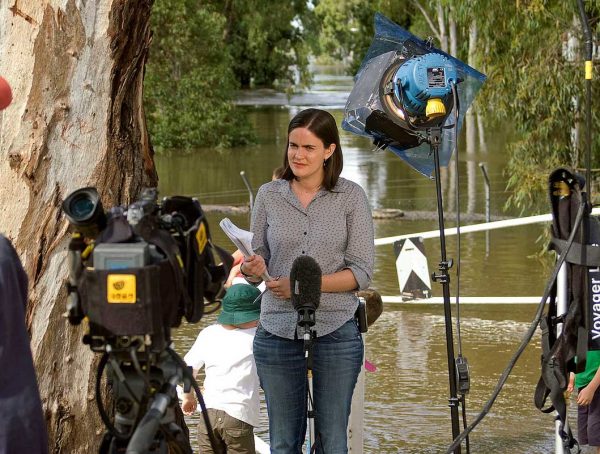 I’ve always been a huge Robert Krulwich fan. His stories on NPR and ABC News break through the standard news blather thanks in part to his memorable delivery. Unlike so many reporters who tend to “announce” their scripts, Krulwich just talks, or at least that’s how it appears to the listener. But don’t be fooled. That conversational approach takes work.
I’ve always been a huge Robert Krulwich fan. His stories on NPR and ABC News break through the standard news blather thanks in part to his memorable delivery. Unlike so many reporters who tend to “announce” their scripts, Krulwich just talks, or at least that’s how it appears to the listener. But don’t be fooled. That conversational approach takes work.
In addition to everything else he does, Krulwich now co-anchors public radio’s Radiolab, which this year won a prestigious George Foster Peabody Award for broadcast excellence. As the program explores science and technology, it’s also “rethinking and reinventing American radio,” says Ira Glass of “This American Life” in an appreciation of Radiolab posted at Transom.
Glass deconstructs how Krulwich and his co-host, Jad Abumrad, achieve their chatty on-air style that almost makes listeners feel they’re eavesdropping on an actual conversation instead of listening to a radio story.
They’ll come into the studio together with a script that’s halfway between a real script and a list of story beats they know they need to hit…They’ll ad lib their way through this so-called “script” a few times, rolling tape the whole time. Then Jad or one of the show’s producers cuts together a version. They listen to it. Then they’ll go back and re-record bits of banter, to make a quicker transition from one section to the next, or to slow down and explain some point more thoroughly, or to set up a piece of tape slightly differently. They’ll do this three or four times, jumping into the studio to make little improvements and adjusting as Jad and the other producers layer in the other production elements, the music and sound.
The result of all that effort is an effortless sound, with lots of back-and-forth between the co-anchors, as in the first story in this episode:
Glass notes that other public radio programs, like Planet Money, sometimes use a similar approach of having one reporter or anchor comment on another’s story. “Having two narrators lets them express amazement, underline what’s funny, manipulate the pacing, pause on a difficult idea and bring up opposing arguments in a very graceful way,” Glass writes.
Some commenters on Glass’s post say the presentation style he so admires feels contrived and forced. But I think he’s onto something:
TV news continually loses ratings. And one way we broadcast journalists can fight back and hold our audience is to sound like human beings on the air. Not know-it-all stiffs. One way the opinion guys kick our ass and appeal to an audience is that they talk like normal people, not like news robots speaking their stentorian news-speak. So I wish more broadcast journalism had such human narrators at its center. I think that would help fact-based journalism survive.
If you think public radio is a different beast and what they do there shouldn’t be tried in commercial newscasts, I beg to differ. Sure, Radiolab’s highly-produced techniques obviously would be difficult or maybe impossible to pull off live. But why shouldn’t TV anchors and reporters try a little harder to speak the way ordinary people talk?








